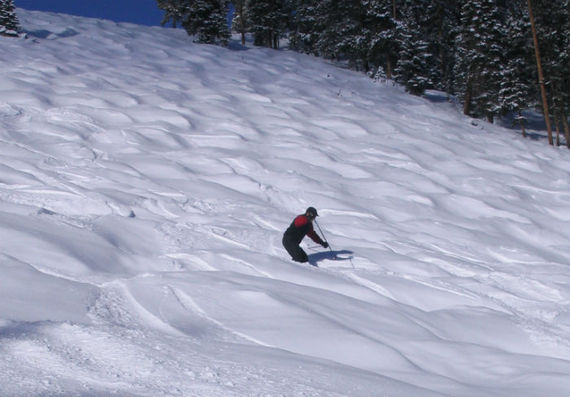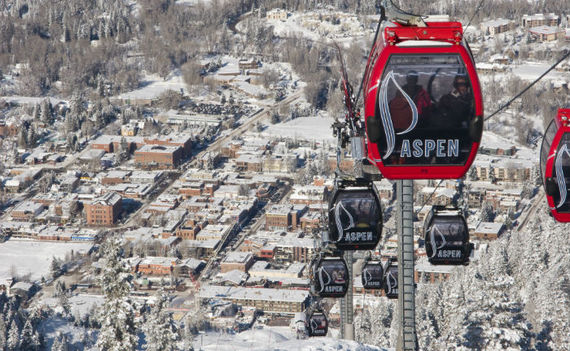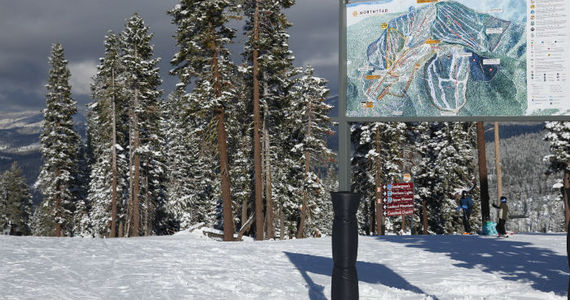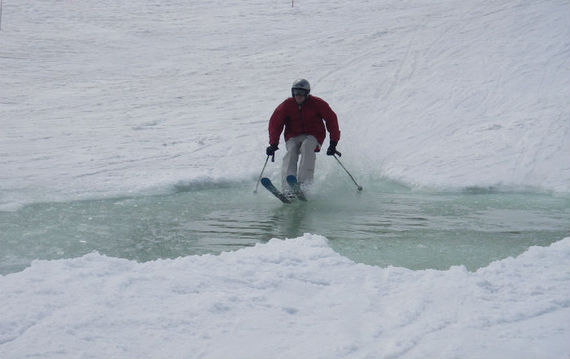We've demystified the following 5 myths about skiing:
1. Moguls always make skiing harder.
Ski resorts spend millions each year catering to skiers' fear of moguls. Grooming snowcats smooth out thousands of trails each night. However, with a little knowledge and technique, skiers can be buddies with bumps.
A somewhat soft mogul field can certainly be easier than a scraped-off smooth slope. The rounded backs of moguls make wonderful pivot points for making turns. A curving sideslip around the mogul can be used to scrub speed. The back of a big bump can even be used as a sort of backstop to steady control before rhythmically continuing down the slope. Look at moguls as sort of a physical metronome to keep that rhythm and guide your line.
Here are a few of North America's favorite mogul runs.
2. The number of trails or lifts always accurately reflects a ski area's size.
A ski area's trail-number total can be easily skewed by a little marketing manipulation. Divide a trail into an "Upper" and "Lower" and one run turns into two. Also, the longest run claim often isn't what you expect it to be. It's usually a meandering catwalk that not many people would actually want to ski for its entire length.
The number of lifts is another inaccurate gauge for size. For instance, both Aspen Mountain and the much-smaller Hyland Ski and Snowboard Area in Minnesota count eight lifts. "Skiable acreage" is a much better measurement that shows Aspen being almost 20 times bigger than Hyland.
3. Trail ratings always accurately measure difficulty.
The fine print on most trail maps reminds skiers that trail ratings are relative to that ski area. As a result, a blue at Snowbird or Taos may be as steep as a black at Northstar or Buttermilk.
Especially at the higher end of the challenge spectrum, snow conditions play a huge role. A double-black chute under 6 inches of fresh snow may be more forgiving than a single-black full of glazed-over, rock-hard moguls.
4. You'll break your leg.
Once upon a time, leg fractures were the typical ski injury. Think of sporting a big plaster cast by the fire in a 1970s lodge. Changing technology in skis and bindings has made actual leg-bone breaks quite rare. Unfortunately, tears of the anterior cruciate ligament (ACL) in the knee have become this era's injury.
Check here for The ABC's of Avoiding ACL Injuries While Skiing.
5. Skiing ends after Spring Break in March.
Skiers can't wait to ski on WROD ("white ribbon of death") manmade snow in October. After March, they strangely leave lots of good natural snow coverage and even powder untouched. Many ski areas close for the season not because they run out of snow. Rather, they run out of skiers.



